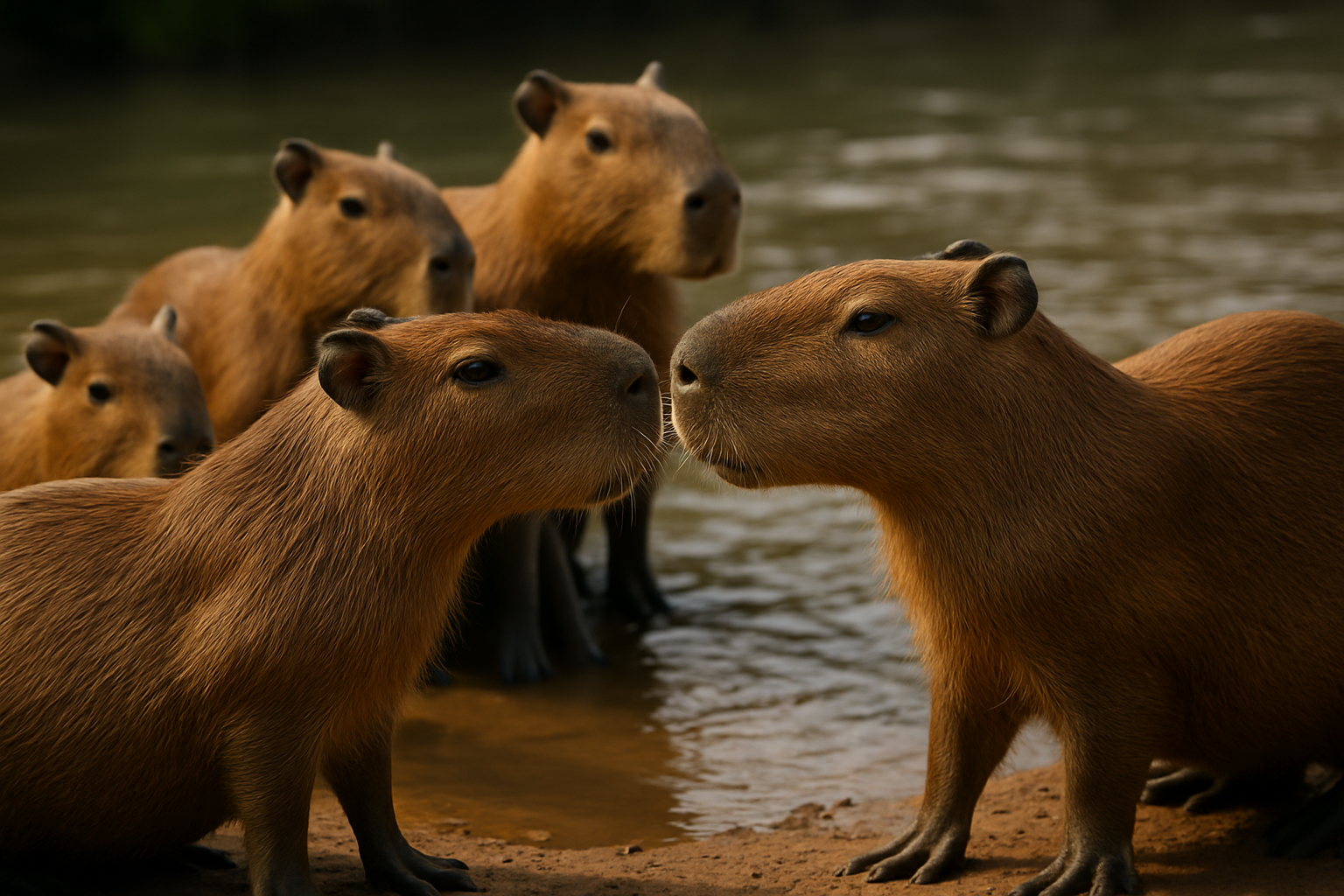Unlocking the Secrets of Capybara Social Dynamics
Capybaras, the world's largest rodents, have long fascinated animal enthusiasts with their gregarious nature and unique social structures. This article delves into the intricate world of capybara social dynamics, exploring their complex relationships, communication methods, and the evolutionary advantages of their highly social lifestyle.

The Foundation of Capybara Society
Capybaras are known for their highly social nature, living in groups that can range from a few individuals to over 100 members. These groups, often referred to as herds, are the cornerstone of capybara society. Within these herds, a complex social hierarchy emerges, typically led by a dominant male who oversees the group’s activities and protects its members from potential threats.
The formation of these herds is not random but rather a carefully orchestrated process that has been honed through generations of evolutionary adaptation. Capybaras have found strength in numbers, using their collective presence to deter predators and increase their chances of survival in the wild.
Communication: The Glue That Binds
At the heart of capybara social dynamics lies their intricate communication system. These animals employ a diverse array of vocalizations, body language, and even scent marking to convey messages to their fellow herd members. From high-pitched whistles to low-frequency purrs, capybaras have developed a rich vocabulary to express everything from warnings of approaching danger to invitations for social grooming.
One of the most intriguing aspects of capybara communication is their use of scent glands. Located on their faces, these glands produce a unique odor that helps individuals identify one another and mark their territory. This olfactory communication plays a crucial role in maintaining social bonds and establishing hierarchies within the herd.
The Role of Hierarchy in Capybara Communities
Like many social animals, capybaras adhere to a strict hierarchical structure within their herds. This hierarchy is not static but rather a dynamic system that can shift based on various factors such as age, size, and reproductive status. The dominant male, often referred to as the alpha, plays a crucial role in maintaining order and protecting the herd from external threats.
However, it’s important to note that capybara hierarchies are not solely based on male dominance. Females also play significant roles within the social structure, often forming strong bonds with one another and collectively caring for the young. This cooperative breeding strategy has been observed to increase the survival rates of capybara offspring, highlighting the evolutionary advantages of their social system.
Cooperative Behaviors: The Key to Survival
One of the most remarkable aspects of capybara social dynamics is their propensity for cooperative behaviors. From shared vigilance to communal nursing, these rodents have developed a range of strategies that benefit the entire herd. For example, capybaras often take turns keeping watch for predators, allowing other members of the group to rest or forage without fear of attack.
Perhaps the most heartwarming example of capybara cooperation is their approach to childcare. In a behavior known as alloparental care, adult capybaras will often help raise young that are not their own. This collective rearing of offspring not only increases the chances of survival for individual young but also strengthens the social bonds within the herd.
The Impact of Environmental Factors on Social Structures
While capybara social dynamics are largely innate, research has shown that environmental factors can significantly influence the structure and behavior of their herds. Factors such as habitat availability, predator pressure, and food resources can all play a role in shaping the size and composition of capybara groups.
For instance, in areas with abundant resources and low predator pressure, capybara herds tend to be larger and more stable. Conversely, in environments where resources are scarce or predation risk is high, groups may be smaller and more fluid in their composition. This adaptability demonstrates the remarkable flexibility of capybara social systems and their ability to thrive in a variety of ecological contexts.
The Future of Capybara Social Research
As our understanding of capybara social dynamics continues to grow, so too does our appreciation for the complexity of their societies. Recent advancements in technology, such as GPS tracking and remote sensing, have opened up new avenues for studying these fascinating creatures in their natural habitats.
Looking ahead, researchers are particularly interested in exploring the long-term impacts of human activity on capybara social structures. As human populations continue to expand into capybara habitats, understanding how these animals adapt their social behaviors in response to environmental changes will be crucial for their conservation.
In conclusion, the social dynamics of capybaras offer a captivating window into the intricate world of animal societies. From their hierarchical structures to their cooperative behaviors, these remarkable rodents continue to challenge our understanding of social complexity in the animal kingdom. As we delve deeper into their world, we not only gain insights into capybara biology but also broaden our perspective on the diverse ways in which social animals navigate their environments and build communities.





